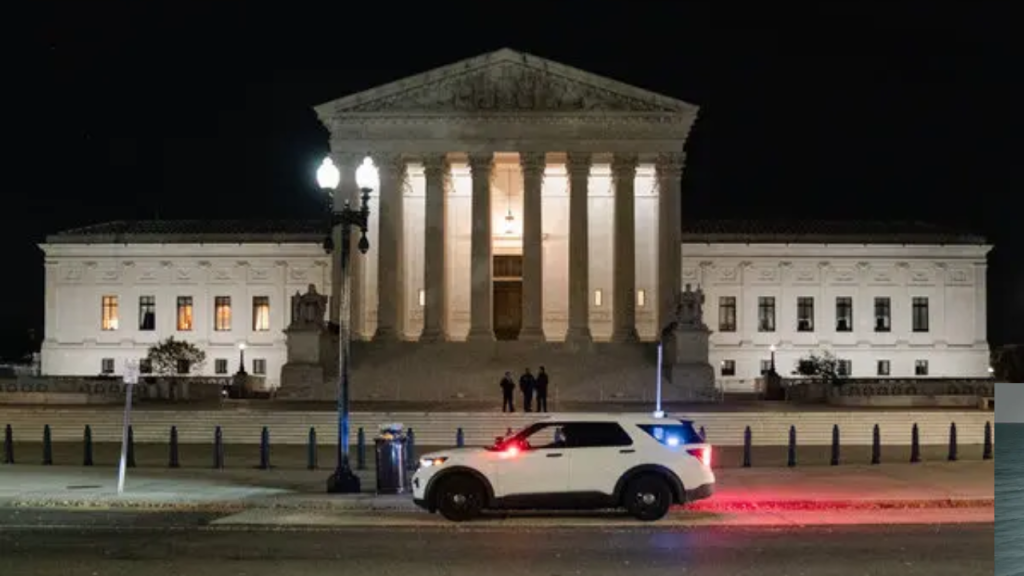
In a landmark decision on June 21, 2024, the U.S. Supreme Court made a significant ruling regarding gun control, one that has sparked considerable debate across the nation. In an 8-1 decision, the Court upheld a federal law that prohibits individuals under domestic violence restraining orders from possessing firearms. The ruling in United States v. Rahimi marks a pivotal moment in the ongoing discussion over the balance between Second Amendment rights and public safety concerns. For now, it seems the Court has struck a delicate balance—one that could shape future legal interpretations surrounding gun rights and domestic violence laws.
The Case: United States v. Rahimi
The case centers around the actions of Zackey Rahimi, who was involved in a violent incident while under a domestic violence restraining order. Rahimi’s case brought into question whether prohibiting individuals under such orders from possessing firearms infringes on their Second Amendment rights. The Court’s decision reinforces a federal law that had been contested in lower courts, ruling that people who are deemed to be a threat to others through domestic violence can be temporarily disarmed without violating their constitutional rights to bear arms.
The justices of the Supreme Court weighed in on the case, with Chief Justice John Roberts delivering the majority opinion. His decision emphasized that this temporary restriction on gun ownership for individuals under domestic violence orders aligns with the nation’s historical tradition of firearm regulations designed to protect public safety.
What the Ruling Means
The ruling essentially strengthens the ability of courts to temporarily restrict gun access for individuals involved in domestic violence situations. It sends a strong message about the Court’s stance on maintaining public safety while respecting the Constitution’s guarantee of the right to bear arms. However, the decision also raises concerns about how far such restrictions can go and whether future cases might challenge the extent of these regulations.
Justice Clarence Thomas, the lone dissenter in this case, argued that the law did not meet the historical criteria required to justify limiting the Second Amendment rights of individuals under domestic violence restraining orders. His dissent underscores the ongoing debate over how far the government can go in regulating gun ownership without violating constitutional rights.
While the Court’s ruling provides clarity in this specific case, it is likely that similar cases will continue to arise, pushing the legal boundaries of the Second Amendment in the context of public safety. The Court’s decision is expected to have a ripple effect on future rulings, particularly those involving other forms of temporary firearm restrictions.
The Majority Opinion
Chief Justice Roberts, in his majority opinion, stated that disarming individuals who are subject to domestic violence orders is a common-sense approach to protecting potential victims. The ruling aligns with past decisions where restrictions were placed on gun ownership for individuals considered to pose a threat to others.
Roberts emphasized that such regulations are part of a long-standing tradition in U.S. law, which seeks to balance individual rights with public safety. He pointed out that the government has long had the authority to impose limitations on gun ownership in certain situations, especially when the safety of others is at risk. According to the ruling, domestic violence is a legitimate concern that justifies temporary gun bans as a means of safeguarding vulnerable individuals from harm.
The Dissent:
Justice Thomas’s dissent raises significant concerns about the potential expansion of gun control laws. He argued that the law in question does not align with the historical understanding of the Second Amendment and that there is no precedent for disarming individuals based solely on a protective order. Thomas’s dissent reflects a broader concern about the potential for the government to overreach in regulating firearm possession, particularly when it comes to temporary restrictions.
Despite his dissent, Thomas acknowledged that domestic violence is a serious issue, but he questioned whether it should serve as a justification for imposing broad limitations on gun ownership. His position is likely to fuel further discussions on how the courts should interpret the Second Amendment in the context of modern-day issues.
Public Reaction and Implications
The Supreme Court’s decision has sparked mixed reactions across the country. Gun control advocates have hailed the ruling as a much-needed step in preventing domestic violence fatalities. They argue that this decision is a victory for victims of domestic abuse, offering them additional legal protection by preventing abusers from having access to firearms.
On the other hand, gun rights groups have expressed concern about the ruling, fearing that it could lead to further erosion of Second Amendment rights. They worry that the decision could set a precedent for other forms of gun control and lead to more restrictions on gun ownership in the future.
As debates continue, the ruling in Rahimi will likely serve as a key reference point for future legal battles surrounding gun rights. While the Court has taken a stand on domestic violence and gun access, questions about the extent of government authority to regulate firearms remain.
Impact on Future Gun Control Legislation
This ruling may be just the beginning. Legal experts are watching closely to see whether the decision will pave the way for more comprehensive gun control laws. Given the controversial nature of the case and the strong opinions expressed by the justices, it is likely that future challenges to similar laws will arise.
While the Court’s decision may be seen as a victory for public safety advocates, it also opens the door for more legal scrutiny of gun laws in the coming years. As lawmakers and legal experts continue to debate the future of the Second Amendment, the Rahimi case will undoubtedly remain a pivotal moment in the ongoing gun control debate.
